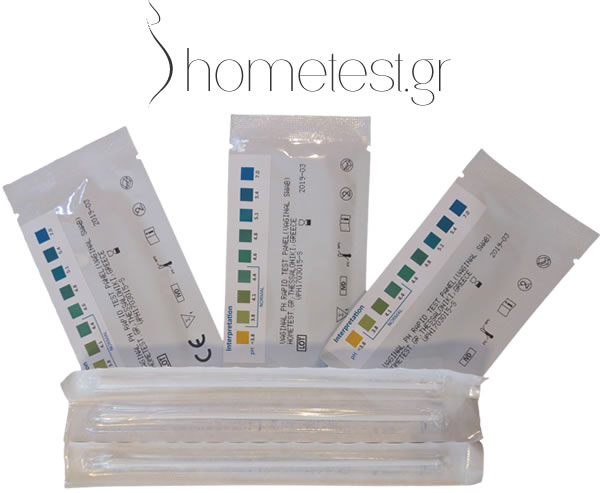How important it is to check vaginal pH during pregnancy?

Disorders of vaginal health and the appearance of vaginitis often cause discomfort to women. A normal vaginal discharge has a pH that ranges from 3.8 to 4.4 and thus "fixes" any pathogenic microorganism. If the secretion becomes alkaline, ie if it reaches or exceeds 5, then there is the possibility of establishing pathological germs, which may not show particular symptoms, but may cause problems.
But how does the body protect itself from vaginal infections? Most bacteria and other pathogens do not grow in an acidic environment. The female body has a protection system that ensures the low acidity (3.8 to 4.4 pH) of the vagina. The normal flora in the vagina consists mainly of "good" bacteria, lactic acid bacteria, which produce lactic acid and create an acidic environment that does not favor the growth of pathogenic bacteria.
The increase in the pH value may be due to the growth of pathogens and the cause of vaginal infections.
What are the symptoms of a vaginal infection?
- Itching
- Burning
- Dryness
- Hypersecretions
- Fishy odor
- Dysbiosis in the vaginal area
20-30% of all women who visit their gynecologist suffer from vaginal infections. However, even as the infection in the vagina progresses, these symptoms may not be felt for a long time!
The increase in vaginal pH causes the production of the characteristic fishy odor observed in bacterial vaginosis. The pH value in the vaginal area fluctuates. Possible causes of change are:
- Bacterial vaginitis
- Bacterial infections from several different germs at the same time
- Sexually transmitted diseases
- Premature rupture of the amniotic sac
- Lack of estrogen
- Postoperative wound infections
- Excessive care of the sensitive area
- Antibiotic treatment
As mentioned before, for the best possible operation of the natural vaginal protection system, a basic condition is that the pH measurement is between 3.8 and 4.4. An increase in pH above 4.5:
- poses a high risk to health
- increases the risk of premature birth
Measuring the pH
The most important natural protection against vaginal discomfort is to maintain a healthy flora. There are a number of factors that regulate the composition and dynamics of the vaginal microbial system and ensure its natural protective function.
In addition to the well-known basic hygiene rules that must be followed to prevent the development or recurrence of a vaginitis, measuring your pH provides you with greater security. The measurement can be done by you with special pH test applicators. With regular use of the special applicator you have the opportunity for:
- controling of the balance of the vaginal area
- early diagnosis of vaginal flora disorders
- prevention of vaginal infections
- greater safety during pregnancy
- control of the effectiveness of any treatment
How often should you check your vaginal pH?
Regular use of the vaginal pH test provides the ability to check the microbiological balance of the vaginal area and is recommended to be performed once every 10 days as part of a regular screening.
It is also recommended to apply:
- When there are changes in daily life (illness, stress, new sexual partner, medication, gynecological surgery)
- After activity in sea water or pool
- In case of more frequent occurrence of discomfort in the sensitive area, such as itching, burning, dryness, hypersecretion, fishy odor
- In menopause
- During pregnancy, where the measurement is recommended to be done 2 times a week. Pregnant women should measure their vaginal pH more often than other women. This is because an increased vaginal pH has been associated with an increased risk of premature birth and premature rupture of membranes.
How is the measurement done?
The measurement is done very discreetly in your home. Insert the sterile cotton swab into the vagina and rest it on the inner wall for 10 seconds to soak well. Remove the swab and rest its head on the special test slot. The test will immediately produce a color depending on the pH of the vagina. The measurement is completely safe and painless. It is very important that the pH value in a clean bay is between 3.8 and 4.4!
What will you do if the pH is not at normal levels?
There is no reason for immediate concern! In case of an increased pH value, repeat the measurement after a few hours or the next day. If the pH value continues to be above normal, then contact your gynecologist. Remember, that the pH value in the vaginal area can change for a while due to a number of factors, without you necessarily being ill.
When is use necessary?
- In case of bacterial vaginosis (unusual growth of bacteria in the vagina)
- When dysbiosis is suspected
- After treatment for an infection (eg treatment with antibiotics)
- At preventive programmed medical examinations
- During pregnancy
- In cases of diagnosed high probability of premature birth
- After sexual intercourse with a new sexual partner
- In case of discomfort in the sensitive area (burning, itching, fishy odor, hypersecretion)
- Before and after vaginal surgeries
PH control during pregnancy
By regularly measuring vaginal pH at home, pregnant women can reduce their risk of infection. Bacterial vaginosis is diagnosed in 15-20% of pregnant women. In this case the risk increases for:
- Premature birth
- Abortion
- Occurrence of chorioamnionitis
- Premature rupture of the amniotic sac
- Fever during childbirth
- Endometritis after childbirth
- Bacterial infection of the fetus
- Underweight babies
More about vaginal pH tests can be found here.
For more information, consult your gynecologist.
--------------------
See all of our blog posts, by clicking here.

0 comment(s)